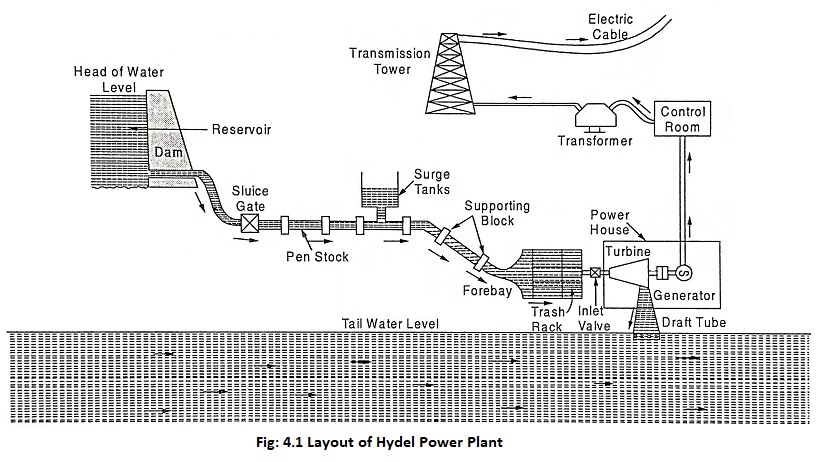Hydel Power Plant – Definition, Working Principle and Advantages:
Power of water – Hydel Power Plant is a clean and cheap source of energy. The basic principle of hydropower is that when water is piped from a higher level to a lower level, the resulting water pressure is used to do work. If the water pressure is allowed to move a mechanical component, then that movement involves the conversion of potential energy of water into mechanical energy. Hydro turbines converts water power into mechanical shaft power, which can be used to drive an electric generator.
Water power is important next to thermal power. Nearly 30% of total power of the world is produced by water power and the use of water as a source of energy is known for a long time. (i.e) In ancient times, water wheels were used at the beginning of the nineteenth century. With the invention of the hydro turbine, the use of hydro power got a new impulse.
Advantages of Hydel Power Plant:
- No fuel and limited maintenance are required, so running costs are low i.e when compared with diesel power.
- The use of hydro can make a contribution to savings on exhaustible energy source for example each 600 kWh of electrical energy generated with a hydro plant is equivalent to 1 barrel of oil.
- It is a long lasting technology, hydro systems can last for 50 years (or) more without any major investments.
- The hydraulic turbines can be put on and off at any moment, where as the nuclear power plant and steam power plant lack this facility.
- Power is continuously available on demand and the energy available is predictable.
Working principle:
In a hydro electric power plant, water is stored in the dam reservoir which has potential energy. This potential energy is converted into kinetic energy when water from the dam is allowed to flow through the pipes. This kinetic energy is converted into mechanical energy allowing the water flowing in pipe to drive the turbine. At last, the mechanical energy by rotating the turbine is converted to electrical energy in the generator which is coupled to the turbine.
The layout of Hydel Power Plant is shown in Fig. 4.1.
